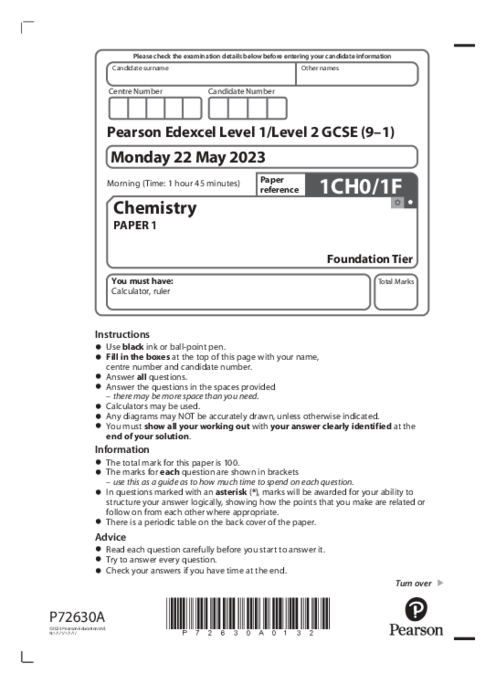Chemistry 1CH0/1F May June 2023
omer uner
1. Atomic Structure and Periodic Table | Identification of subatomic particles, electron configurations, trends in reactivity of alkali metals, halogens, and noble gases, and arrangement of elements in the periodic table.
2. Chemical Bonding and Properties | Differences between ionic, covalent, and metallic bonding, interpretation of dot and cross diagrams, and analysis of properties of different bonding types.
3. Chemical Reactions and Equations | Writing and balancing chemical equations, types of reactions (e.g., neutralization, combustion, precipitation), and factors affecting reaction rates.
4. Acids, Bases, and pH | Understanding pH scale, acid-alkali reactions, neutralization processes, titration methods, and indicators used in acid-base reactions.
5. Electrolysis and Metal Extraction | Electrolysis principles, redox reactions at electrodes, extraction of metals based on their reactivity, and advantages of recycling metals.
6. Separation Techniques and States of Matter | Chromatography, distillation, filtration, crystallization, interpretation of heating curves, and understanding state changes in terms of energy.
See More Paper 1 10 months ago
Chemistry (1CH0) Subject directory
All resources in one place
Related Past Papers
Related Tutorials
Crash report
